What is a Nanbu Senbei
The Nanbu Senbei is a type of cracker like staple food that has widely been enjoyed for a long time in the Hachinohe Area and in the Northern Iwate Area. Starting from a dough made from the three simple ingredients of wheat flour, water, and salt, it is then grilled in small round cast iron molds until crisp and light. Simple but satisfying, the flavor of the Nanbu Senbei has a wide berth of depth and range.
It is the signature component in the most famous dish of the Hachinohe Area, Hachinohe Senbei Soup. The soup is made by stewing a variety of vegetables and either chicken or fish together, and then as a final touch breaking Nanbu Senbei up and adding them to the pot. Although the Nanbu Senbei used for Senbei Soup are usually plain, Nanbu Senbei are regularly made with a variety of toppings including peanuts, sesame seeds, and etc.
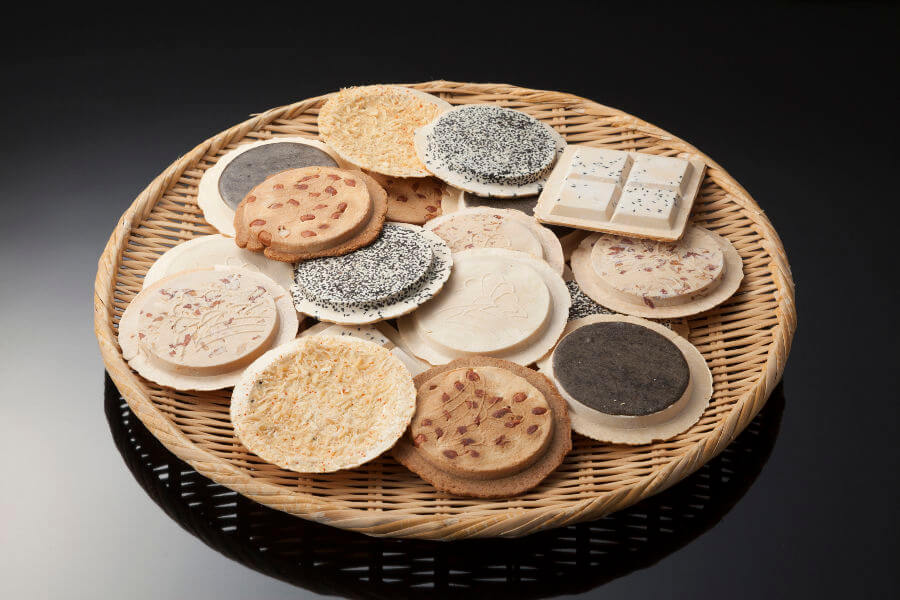
The History of the Nanbu Senbei
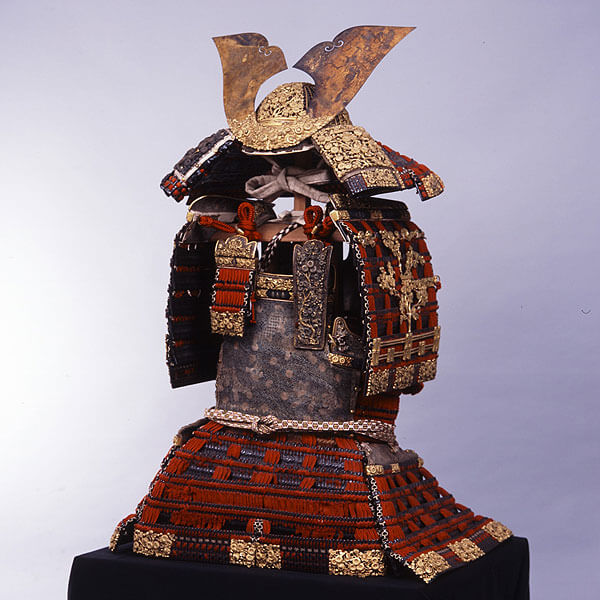
Since long ago, the people of the Hachinohe Area have struggled against a natural phenomenon called the Yamase wind. From spring until the early summer, a cold wet wind blows in from the Pacific, traditionally damaging or completely ruining crop growth. This yamase wind was particularly detrimental to rice cultivation, and was the source of countless famines and hardships in the area. This inability to consistently produce rice, the backbone of Japan’s culture and society, led to many social, political, and cultural ramification for the Hachinohe Area, but its strongest influence was over the food that the people could grow and eat. Rather than fickle rice, the people had to grow and consume other grains such as wheat, buckwheat, millet and etc. that were naturally hardier against cool weather. The cultivation of grains outside of rice, and the subsequent flours that where made from those grains, lead to a unique culture being formed in this area. This culture has been named the konamon bunka or ‘flour-based food culture’ and is an integral part of the area’s identity, and a testament to the resilience of the people of the Hachinohe area. The humble Nanbu Senbei is the most well known and beloved representation of the ‘konamon’ culture. A staple food made from grain-based flour, this cracker helped fill the bellies of the people of this area for centuries, and continues to fill their hearts to this day.
The Origins of Nanbu Senbei
There are three purported stories about the origins of the Nanbu Senbei:
① During the Nanboku-cho period (1336-1392) the ruling emperor of the time Emperor Chōkei visited the Hachinohe Area. A retainer had not prepared anything for the Emperor to eat, and panicking asked a local farmer for ingrediants and was given buckwheat flour and sesame seeds. He then took these, made a dough with the buckwheat flour, covered it with sesame seeds and cooked it in his own helmet.
② The soldiers of the Lord of Nanbu of the Ne Castle, made the dish impromptu on the field of a battle using their helmets.
③ Jesus Christ, who after escaping execution and fleeing to Japan, made the dish in place of bread.
Out of the above stories, the one most often related is the first.
What’s with the stamp on the Nanbu Senbei
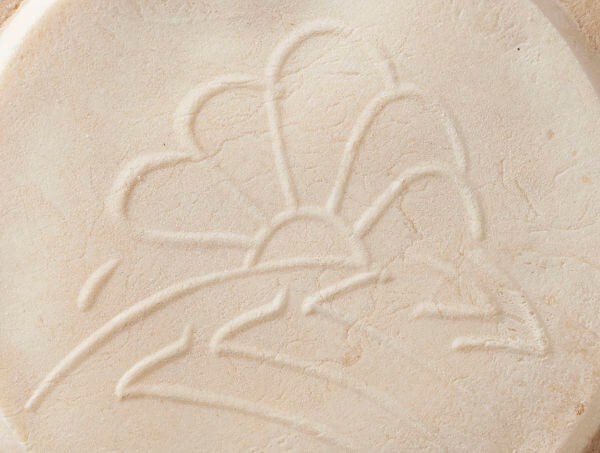
One thing first time eaters are sure to notice are the interesting symbols raised on top of the Nanbu Senbei.
There are actually two common motifs that can be found on a senbei: the ‘kikusui’ or ‘floating chrysanthemum’ and the ‘sankaimatsu’ or ‘three teared pine’. The legend of the origins of the senbei cracker gives the key to their meaning. As the above origin tale tells, when the emperor Chokei came to this area, one of the local retainers ended up making the first Nanbu Senbei for the emperor using his helmet. This retainers name was Akamatsu, and the emperor was said to be so impressed with the senbei that he granted Akamatsu the use of two crests when making the iron molds for the Nanbu Senbei.
Types of Nanbu Senbei
In the Hachinohe Area, Nanbu Senbei are an indispensable part of every household, and are regularly eaten in an everyday context. They can be purchased everywhere from department stores to supermarkets, and their flavors are as varied as the number of companies that make them. In fact, for many a discerning Hachinohe resident, exactly which senbei marker produces the best senbei and why is the subject of heated debate.
Below is just a sample of some of the more commonly found types of Nanbu Senbei:
Shiro (Plain) Senbei
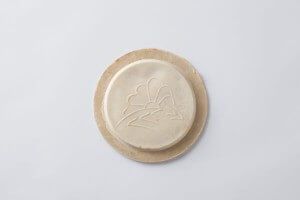
The simplest of all the senbei is the shiro or plain white senbei. It is made with just water, salt, and flour. The rich pronounced flavor of wheat flour makes these crackers tastes more bread-like than anything closer to a traditional senbei. Although it tastes delicious just plain as it is in its simpleness, the shiro senbei is a great base to which can be added toppings of any kind.
Goma (Sesame Seed) Senbei
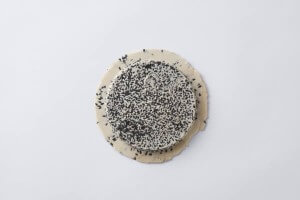
Sesame seeds are the most traditional toppings for Nanbu Senbei. The slight aromatic fragrance of the sesame seeds perfectly compliment the flavors of a plain senbei. The sesame senbei still are one of the most popular flavors in the local area today, and are said to be the preferred choice of many adults. Slightly bitter sweet, these senbei are said to be quite addictive and many houses are known to always keep them stocked and on hand.
Mame (Peanut) Senbei
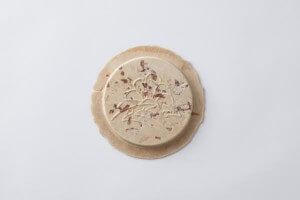
Peanut senbei are enjoyed by many for the slight sweetness that the peanuts add to overall senbei flavor. Slightly reminiscent of the USA’s peanut butter crackers, these senbei are often preferred by those who do not like the sesame flavored senbei.
Goma Nuri (Sesame Paste) Senbei
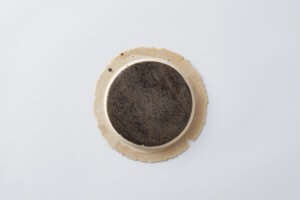
The sweetness of black sesame is brought out in these senbei as a layer of paste is painted on the top of the crackers. It tastes almost exactly like black sesame seed dango, a type of Japanese dessert.
Ika (Squid) Senbei
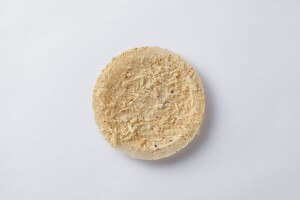
This version of senbei is loaded with tons of dried shredded squid. The city of Hachinohe is famous for its squid and as such this is quite a popular choice in the area. The saltiness and umami savory-ness that the dried squid lends to the senbei make it not only delicious but also a perfect snack to accompany a cold beer or sake.
Cookie Senbei
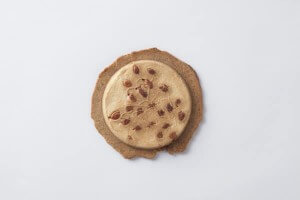
Those with a sweet tooth will be sure to enjoy the cookie senbei varity. Sugar and butter are added to give the senbei a taste and texture like that of a cookie, and the cast iron molds that it cooks in gives it an almost slightly caramelized flavor. This variety is usually thicker than other senbei, giving it another distinct characteristic.
Mizu-Ame (Candy Syrup) Senbei
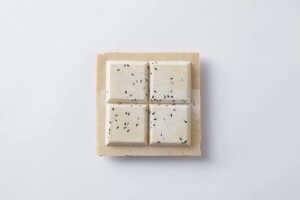
This senbei style is actually two senbei sandwiched together with a filling of mizu-ame (a type of thick Japanese sugar syrup) in between. This style of senbei is seen as an old-fashioned treat in Japan, and has a flavor of nostalgia for many Japanese people.
The Many ways to eat Senbei
Tenpo senbei
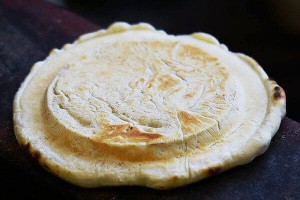
When people think of Nanbu senbei they think of its crispiness, but the appeal of tenpo senbei is their soft, puffy texture and the simple, slightly salty taste. There is even a “senbei cafe” where you can taste how well coffee goes with tenpo senbei.
Okawa senbei (Kobirikko)
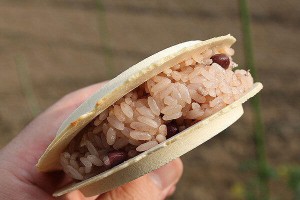
Okawa senbei is a sandwich of freshly-cooked rice with red beans between two Nanbu senbei crackers. Also called “Kobirikko”, it was mainly eaten as a snack between jobs on the farm. Okawa senbei is available for purchase at the Nango Rest Area.
Senbei “ears”
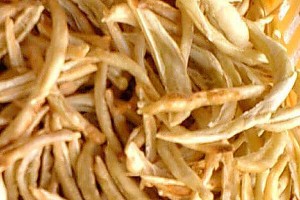
The “ears” are the parts that stick out of the molds when baking Nanbu senbei. These long, salty slivers of rice cracker make great bar snacks and they oten sell out before the Nanbu senbei themselves.
Senbei tempura
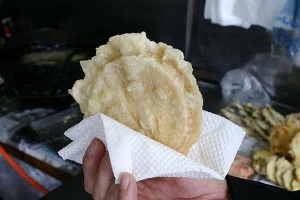
Flour (Nanbu senbei) with flour (batter)?! The perfect combination of moist senbei with crispy batter is a delicacy unique to Hachinohe. You can try it at locations such as the Mutsuminato Station and Tatehana Wharf Morning Markets.
Senbei pizza
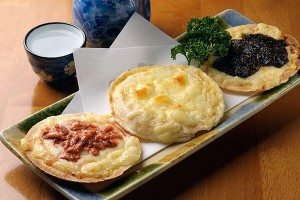
If flour is an ingredient in both Nanbu senbei and pizza, shouldn’t pizza toppings go well on Nanbu senbei? You simply must try the new sensation of hot melted cheese on Nanbu senbei. Nanbu senbei pizza is available at shops in the Yokocho area and other places.
